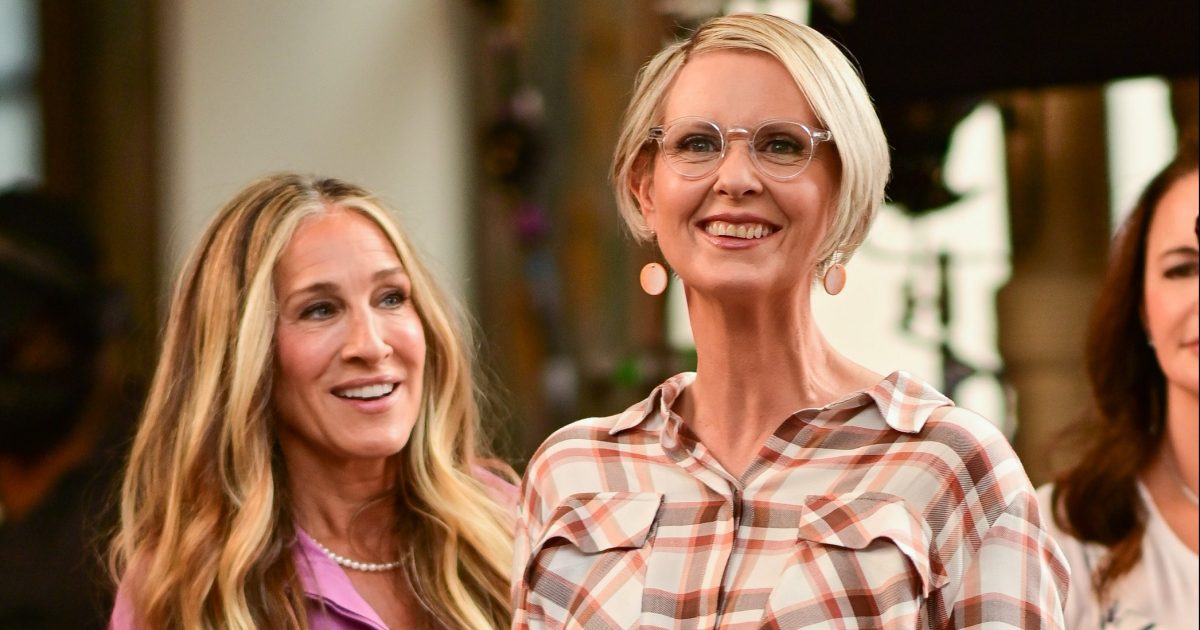Finding Pride After Breast Cancer
- Actress and breast cancer survivor Cynthia Nixon is radiant this pride month in a new post that shows off her bright hair-do.
- The 56-year-old plays Miranda Hobbes on the Sex and the City reboot And Just Like That…, and she's loving that her character is openly queer in the new series.
- A cancer diagnosis will change your life; Nixon shows us how possible it is to thrive after defeating the battle.
Read MoreView this post on Instagram
The proud member of the LGBTQ+ community has been spotted out and about in New York City this June during pride month. She’s receiving a lot of love in her Insta post’s comment section and from fans across social media.View this post on Instagram
Just leave here, I'm thinking about Cynthia Nixon all the time. pic.twitter.com/DZOJgy66Wr
Yess | Cynthia Nixon ⤠(@YessNixon) June 19, 2022
Taking Pride In Her Roles
Nixon lives in NYC with her wife, activist Christine Marinoni, 55, and their child Max Ellington Nixon-Marinoni. The couple has been married since 2012, but Nixon was previously in a longterm relationship with Danny Mozes whom she shares her other two children with Samuel Joseph and Charles Ezekiel Mozes.
Nixon openly identifies as queer, and when And Just Like That show-runner Michael Patrick King, 67, asked her about the possibility of her character, Miranda Hobbes, being queer as well, she was all for it.
"I was like, 'Sure, why not!'" Nixon told Variety. "If we're trying to do different stuff, and show different worlds, and show different aspects of these characters, why not do that?"
She's even said she thinks Hobbes was always queer.
"Even though she was only really interested in men, I think that Miranda had many other queer and frankly, ‘lesbianic’ qualities about her," she said. "And I think for a lot of gay women, she we didn't have a gay woman! But she was a stand-in for the gay women we didn't have."
"Miranda has always grappled with power, and female power versus male power, and women getting the short end of the stick and that's a big issue for women who are queer. I think not having to be under a man's thumb has always been one of the very appealing things that being with another woman has to offer."
Cynthia Nixon's Cancer Battle
Although Nixon seems to be in a good place in her life and career, there's no denying she's been through many ups and downs including her breast cancer battle.
Nixon found a lump in her breast in 2006. Thankfully, her cancer was found at stage 1. And though breast cancer is always a serious diagnosis, Nixon remained calm throughout her cancer journey.
"When I was diagnosed, my wife who was not my wife at the time because there wasn't yet gay marriage in New Yorkwent into shock about it," she told Parade. "She was really scared. I was much less scared because I understood they caught it very early. It hadn't metastasized at all. And it was in this one very local, small place."
She went on to say that her mother was a big reason she took the news so well.
"My mother had breast cancer when I was 13, and she survived," she said. "Because of not only my mother's experience, but also my mother's attitude, I viewed it with caution."
For treatment, Nixon underwent a lumpectomy and six-and-a-half weeks of radiation followed by the hormone therapy Tamoxifen for five years.
"I did all the things advised for me to do, but I tried my best to keep my fear to a minimum," Nixon said.
Nixon's cancer was caught at a routine mammogram. She began her mammograms at age 35 because of her mother's breast cancer.
Understanding Breast Cancer
Breast cancer is a common cancer that has been the subject of much research. Many women develop breast cancer every year, but men can develop this cancer too though it is more rare, in part, due to the simple fact that they have less breast tissue.
There are many treatment options for people with this disease, but treatment depends greatly on the specifics of each case. Identifying these specifics means looking into whether the cancerous cells have certain receptors. These receptors the estrogen receptor, the progesterone receptor and the HER2 receptor can help identify the unique features of the cancer and help personalize treatment.
"These receptors, I like to imagine them like little hands on the outside of the cell, they can grab hold of what we call ligands, and these ligands are essentially the hormones that may be circulating in the bloodstream that can then be pulled into this cancer cell and used as a fertilizer, as growth support for the cells," Dr. Elizabeth Comen, a medical oncologist at Memorial Sloan Kettering Cancer Center, previously told SurvivorNet.
Contributing: Abigail Seaberg
Learn more about SurvivorNet's rigorous medical review process.


